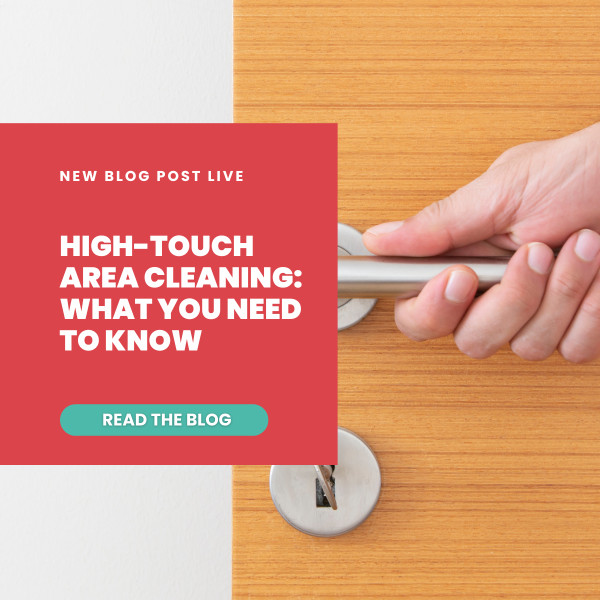High-touch areas - those surfaces most frequently contacted by multiple people - represent a key point of contact for germs and other contaminants. Regular cleaning of these surfaces is especially important for maintaining office hygiene and protecting staff health, as these areas can harbour bacteria and viruses, contributing to the spread of illness if not properly maintained. This blog outlines which surfaces to prioritise, why high-touch cleaning is critical, and best practices for keeping these areas safe and sanitised.
Why Focus on High-Touch Areas?
High-touch areas, such as door handles, light switches, keyboards, handrails, and shared equipment, are focal points for contamination. Studies show that viruses can live on surfaces from several hours to days, depending on the type of material. Without routine cleaning, these microbes can easily transfer from person to person, increasing the risk of outbreaks in office environments. Not only does this put employees' health at risk, but it also impacts productivity, as more staff may take sick leave due to easily spreadable illnesses.
Key High-Touch Areas to Address
Effective cleaning regimes should concentrate on the most commonly touched surfaces within the workspace, including:
- Handles and Handrails: Door handles, drawer pulls, and handrails are among the most frequently touched surfaces, making them highly susceptible to germ build-up.
- Technology and Office Equipment: Shared devices like keyboards, phones, and copy machines see heavy daily use and should be wiped down regularly with appropriate disinfectants.
- Reception and Waiting Areas: The high traffic of these zones demands that seating, reception desks, and counters be sanitised frequently to prevent cross-contamination among employees and visitors.
The winter months, in particular, increase the need for meticulous cleaning, as cold and flu season can lead to an uptick in office illnesses. Regularly sanitising these areas can help break the chain of infection by targeting locations most prone to germ transfer.
Best Practices for Effective High-Touch Cleaning
To ensure high-touch areas are cleaned effectively:
- Create a Cleaning Schedule: High-touch surfaces should be cleaned at least once a day, and more frequently in busy environments. Consider implementing a morning and afternoon cleaning routine for maximum protection.
- Choose the Right Products: Use disinfectants suitable for various surfaces, as certain cleaning agents may damage materials like electronic devices or delicate finishes. Where possible, opt for products that are both safe and effective to ensure compliance with hygiene standards.
- Educate Staff on Hygiene Practices: Keeping employees informed on basic hygiene practices, such as handwashing, complements cleaning efforts. This is particularly useful in settings where some areas are self-cleaned, like shared kitchens
- Utilise Proper Cleaning Techniques: Ensure that high-touch areas are not just wiped but fully disinfected, allowing surfaces to remain visibly wet for the disinfectant's recommended dwell time to eliminate pathogens effectively.
Why Professional Cleaning Matters
Many companies have turned to professional cleaning services to manage high-touch area maintenance effectively. Professional services bring expertise, consistency, and access to industrial-grade disinfectants, which are crucial for ensuring a consistently high standard of cleanliness. With professionals handling the routine sanitisation of high-traffic surfaces, businesses can focus on their core operations while trusting that their facilities meet the highest hygiene standards.
By maintaining a thorough and regular cleaning routine for high-touch surfaces, businesses can foster a healthier, safer workplace. Contact Fenn on 01782 344000 or at This email address is being protected from spambots. You need JavaScript enabled to view it. to discuss your business hygiene needs, ensuring that your high-touch areas remain clean, safe, and welcoming for all.
